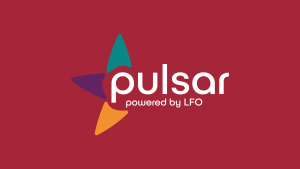
This page is dedicated to housing the training module materials for teachers who are already familiar with language learning portfolios. Each training module has three learning targets, and users experience the learning targets in four phases: Self-Assess, Acquire, Observe, and Apply.
Self-Assess
Assess your current knowledge. The key concepts covered in this module are:
- I can create an approach for the implementation of Pulsar that fits my specialized context.
- I can identify and explain high-quality opportunities to collect evidence of student language proficiency.
- I can embed reflection throughout my language course.
Acquire
- Create an approach for the implementation of Pulsar: Designing your implementation approach for Pulsar is relatively simple! You just need to decide upon 1) the frequency with which your students will upload evidence, 2) the type of evidence students will upload and save, and 3) the tools (computers, mobile devices, or both) that you will use for evidence capture.
Read Considerations for Classroom Implementation, our Computer Lab Implementation Guide and our Mobile Device Implementation Guide. Then, answer these questions:
- What is the minimum number of times that your students should upload evidence to Pulsar?
- What are some ways to facilitate efficient evidence capture and upload?
- Identify and explain high-quality opportunities for evidence collection: Evidence can include any artifact that students create to support their abilities to demonstrate their present mastery of the learning targets (Can-Do Statements) in Pulsar. Thus, evidence can take make forms! A variety of media types can be uploaded to Pulsar, including text documents, audio files, video files, and evidence from Web 2.0 applications.
Teachers may find Stage 2 of the SOPHIE Curriculum Template useful when deciding what evidence to have learners upload. Any evidence created that demonstrates mastery of those Can-Do Statements will do; that which was created as part of the performance assessment task, and that which was created to prepare for it. However the teacher intends to use the evidence should drive its selection; if the teacher wants to give feedback and have students to reflect on a specific task, the work they do for that task can be uploaded, but if the teacher wants the students to consider their growth overtime, the students will likely have more autonomy in selecting their evidence.
It is important to help students think about the evidence that would best demonstrate their language abilities and how that matches with the mode of communication at hand. They also should be aware of the characteristics that apply to different proficiency levels. Our Proficiency Examples may be helpful to use with students. Look over them, then answer these questions. After that, check your answers on our Collecting Evidence Answer Key:
- True or False? Teachers should always mandate what evidence students upload to Pulsar.
- Imagine that you are new to language learning portfolios. Where is the first place you should look on the SOPHIE Curriculum Template when considering what evidence learners might upload to Pulsar?
- What guidance related to uploading to Pulsar should you provide students?
- Consider the evidence uploaded (pictured below) for the following Can-Do Statement: I can ask for help at the store. The student rated the evidence as “Can do well.” Does this evidence indicate interpersonal proficiency (Novice High) at a “Can do well” level?


- Embed reflection throughout the course: As is mentioned in the Mobile Device Implementation Guide and the Computer Lab Implementation Guide, student reflection should happen on a continual basis. However, it must be scaffolded for students to achieve desired outcomes. Please use our Student Reflection Guide as you work with your students.
Observe
- Create an approach for the implementation of Pulsar: Read over and consider this completed implementation plan.
- How does this implementation plan relate to your context? Would you require different resources? (To answer this question, consider the tools used to upload evidence, the plan for incorporating student reflection, and the frequency with which you plan to ask learners to upload. Remember, aim for at least four Pulsar sessions!)
- What challenges do you foresee? How might you respond to those challenges? (You might consider your technical infrastructure including the student: device ration, bandwidth limitations, or the time you would need to test Pulsar ahead of time. You might also consider the timing of upload and reflection and how that timing might impact lesson design).
- Identify high-quality opportunities for evidence collection:
- Step 1: Watch this video starting at about 8:20 and identify at least three evidence samples created by students. Although this video was designed for LinguaFolio Online and not specifically for Pulsar, the approach to incorporating evidence collection and reflection in the class is relevant in a STARTALK context as well. ta
- Step 2: Take a look at this Classroom Activity Description. How could students collect evidence during this activity? Consider the specific file types that would be recorded. Check your answer against our ideas.
- Embed reflection throughout the course: Now that you have observed classroom activities designed to produce high-quality evidence to upload to Pulsar, think about the various approaches to reflection embedded in each tool you observed (the Completed Implementation Plan, the video, and the Classroom Activity Description). Answer the questions you see below.
- Which of the following are appropriate approaches to integrating reflection in a language learning course?
- Reflect at the beginning of the course on where you are currently and reflect at the end of the course on your progress.
- Reflect on a regular basis: at the beginning/end of certain activities or during specific class periods.
- Reflect individually.
- Reflect by engaging in peer and/or instructor review.
- Alll of the above
- Which of the following are appropriate approaches to integrating reflection in a language learning course?
Did you answer E? Great! Time for reflection needs to be protected throughout a course to maximize learner gains. Reflecting only at the beginning and end of a course (A) will not be an effective approach unless it is paired with other approaches.
Apply
- Create an approach for the implementation of Pulsar: Now that you’ve observed Pulsar, you might wonder how to apply it to your unique teaching context. Read Hypothetical Program Description and think about how you would actively use Pulsar in the described setting.
Now, answer the questions below. Use this Implementation Key to check your answers.
- What is the minimum number of times Stephanie should use Pulsar in the course?
- When should Stephanie communicate each day’s learning targets (Can-Do Statements) to students?
- Think about Stephanie’s curriculum in your context. Would you use mobile devices to capture and upload evidence? Computers? A combination of both?
- If you were Stephanie, when would you plan to have your learners upload evidence for each learning target? Use Implementation Plan Template to organize your thoughts.
- What resources, in addition to the Pulsar app and/or the computer lab, does Stephanie need? You may continue filling out the Implementation Plan Template to answer this question.
- Identify high-quality opportunities for evidence collection: Consider the Hypothetical Program Description again as you answer these questions:
- What types of evidence (e.g., videos, photos, or text documents) do you think would best demonstrate each students’ abilities to introduce themselves?
- What types of evidence do you think would best demonstrate students’ abilities to introduce their families?
- What types of evidence do you think would would best demonstrate students’ abilities to present a plan for a trip?
- What types of evidence do you think would would best demonstrate students’ abilities to ask for help while shopping?
- Now apply integrating evidence with task design to your own class. Think of one activity that you plan to use. Specify the evidence types that might be collected, the method for creating files and sharing them with students (if applicable), and your plan for how and when students would upload evidence.
Now, check your answers using the Evidence Identification Key.
- Embed reflection throughout your course: Reflection and goal-setting go hand in hand. Reflection is crucial to the overall efficacy of a goal-driven, proficiency-based language class. Research has shown that goal-setting and reflection help students maintain focus and motivation, while also providing insight into and self-awareness of an individual’s learning style and self-concept [Moeller et al., 2012; Velandia, 2015].
With Pulsar, you can give your students the opportunity to reflect on their work and the evidence they have collected. Keep in mind that effective reflection requires integration of reflection tasks into the classroom. Answer the following question and check your answer using the Embed Reflection Key.
- What reflective activities will you plan for your students as part of your course?
Congratulations! Now, you are ready to take Pulsar use to the next level! If you need help, please email us anytime at pulsar@uoregon.edu.
